Featured Comment:
“Finally, the perfect teriyaki recipe! It’s AUTHENTIC, simple teriyaki without any extraneous ingredients and with the perfect ratio. It’s absolutely delicious! Thank you so much, we’ve made this many times now and love it.”
– Laura
What is Teriyaki Chicken?
Teriyaki chicken (照り焼きチキン) is arguably one of the most well-known Japanese dishes in the world, and for good reason! Juicy chicken thigh with crispy skin and a sweet and sticky soy sauce-based glaze, what’s not to love?
Despite the dish’s popularity, the term “teriyaki” is often misunderstood.
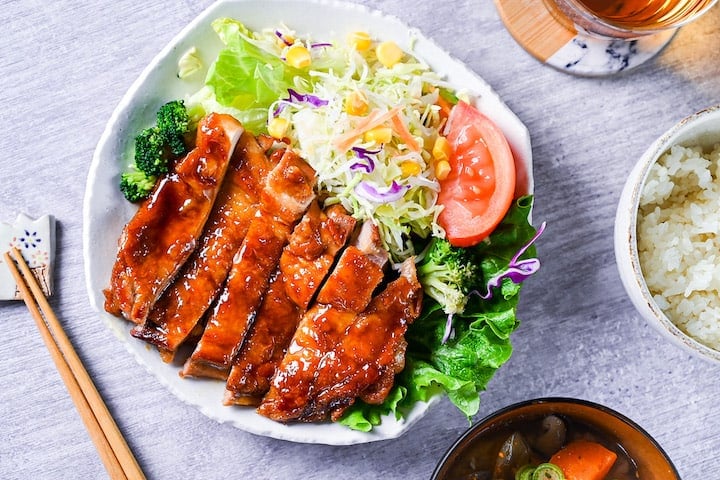
Teriyaki is Technically Not a Sauce
Teriyaki (照り焼き) is not merely a sauce but a traditional Japanese cooking technique. In Japanese, “teri” (照り) signifies gloss, while “yaki” (焼き) denotes cooking or frying.
The sweet, soy sauce-based glaze used in teriyaki, often containing sugar, caramelizes during cooking, sealing in the flavor and creating a syrup-like consistency. This method is reminiscent of kabayaki, a grilling technique.
While the exact origins of the teriyaki cooking method are unclear, it likely emerged around the 18th century, given that kabayaki’s inception coincided with the development of soy sauce in Eastern Japan.
Interestingly, “teriyaki sauce” available internationally often lacks traditional ingredients like mirin or sake. Instead, it might resemble a soy-based barbecue sauce. In other words, there is a divergence in definition between teriyaki in Japan and teriyaki in the rest of the world.
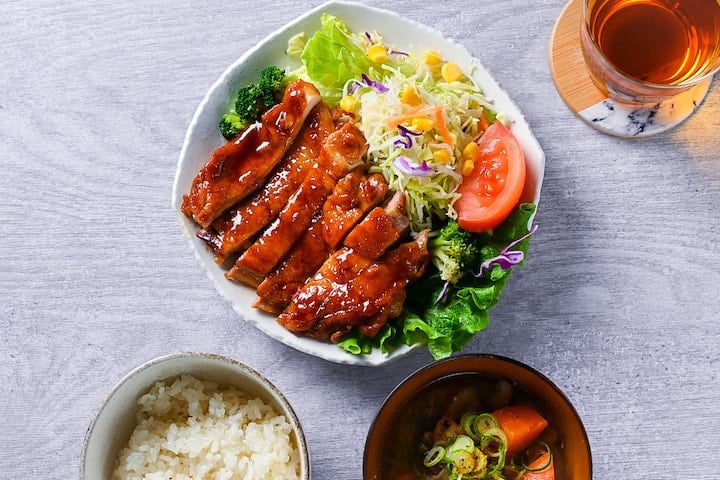
Authentic Teriyaki Chicken isn’t Marinated
I realize using pre-made teriyaki sauce or marinade to make teriyaki chicken outside Japan is common. Don’t get me wrong, there’s nothing wrong with it. However, the authentic way does not use pre-made sauce or marinade because teriyaki is not considered a sauce but a cooking method.
The four vital ingredients in the “teriyaki method” are soy sauce, sake, mirin, and sugar.
I will explain more about it later and in the recipe card at the bottom of the page.
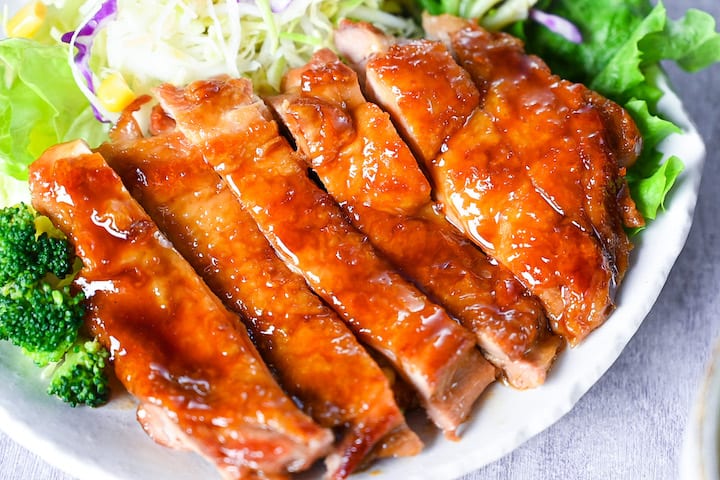
Making Authentic Teriyaki Chicken without Pre-made Sauce
It might come as a surprise, but pre-made teriyaki sauce is not commonly found in Japan. There’s little demand for a pre-packaged version since soy sauce, sake, mirin, and sugar are staples in Japanese kitchens.
While there are variations that incorporate additional ingredients, these four remain the quintessential components of teriyaki. I strongly advise against omitting or substituting any of them!

Visual Walkthrough & Tips
Here are my step-by-step instructions for how to make The Ultimate Teriyaki Chicken at home. For ingredient quantities and simplified instructions, scroll down for the Printable Recipe Card below.
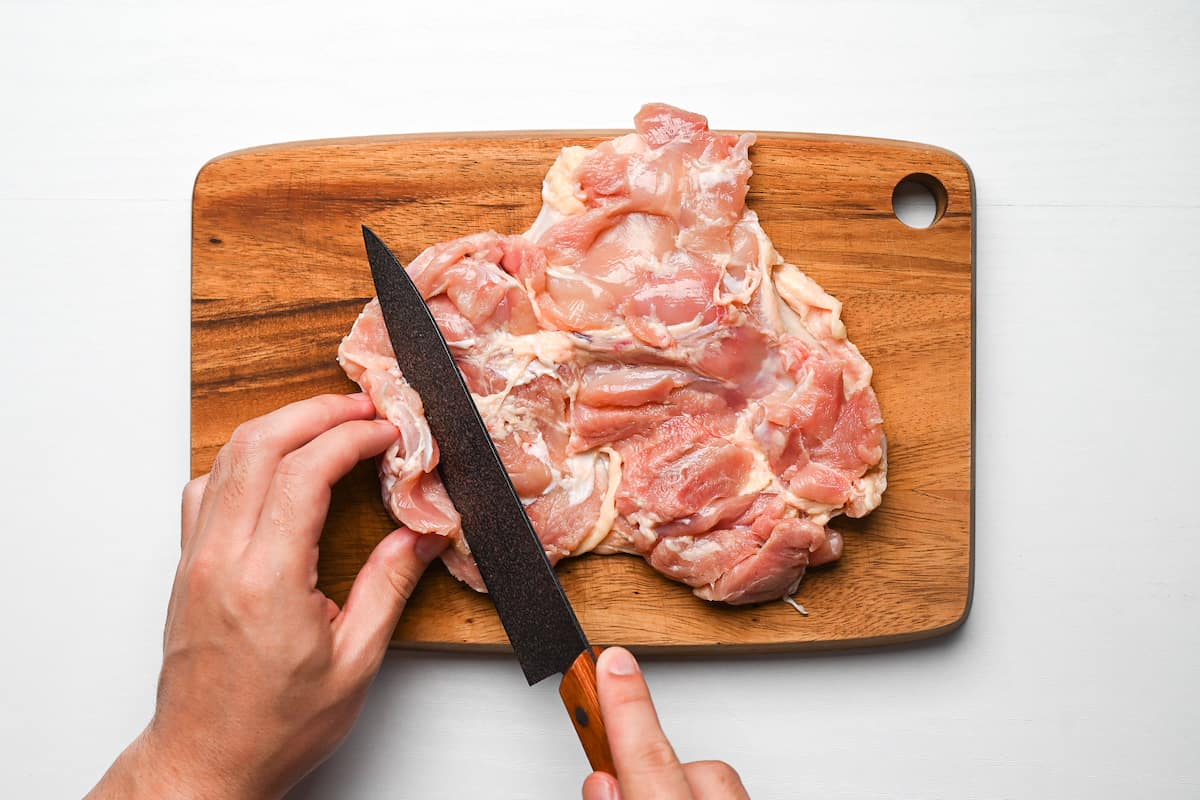
Chicken thigh is quite thick, so to ensure it’s evenly cooked all the way through, I like to make horizontal cuts on the thickest parts and then fold them out.
Turn the chicken over so the skin is facing down, and cut the thickest parts of the underside to make flaps you can pull out.
If you make a diagonal/horizontal cut, you should be able to open out each flap and flatten out the chicken thigh, making it an even thickness all over. The larger surface area also ensures maximum flavor because more of the sauce is in direct contact with the chicken.
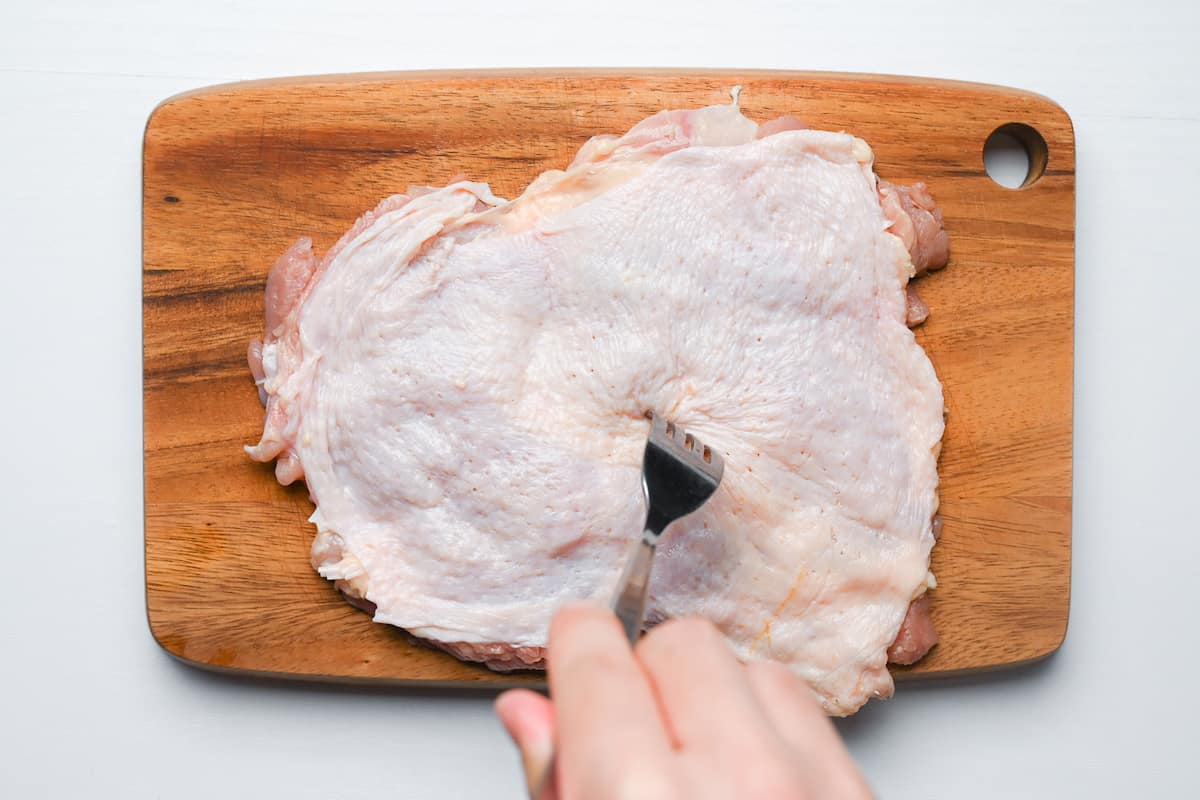
The skin acts as a barrier, so I stab the skin side all over using a fork to ensure the flavor can reach the chicken meat. This will make the chicken juicer and more flavorful.
After piercing the chicken, sprinkle a pinch of salt on both sides.
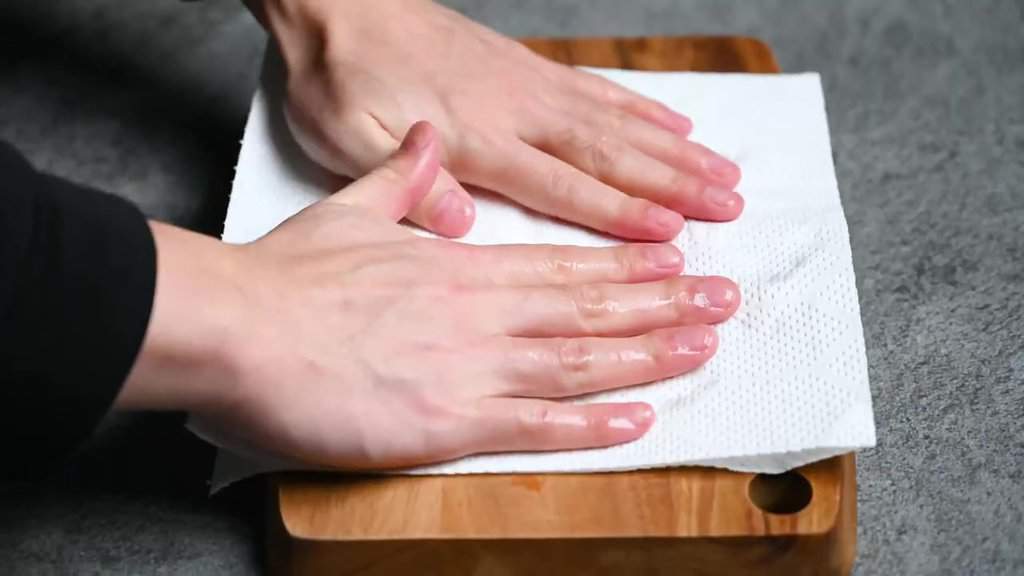
Patting the surface of the chicken dry before cooking results in a crispier skin that helps the sauce to stick better.
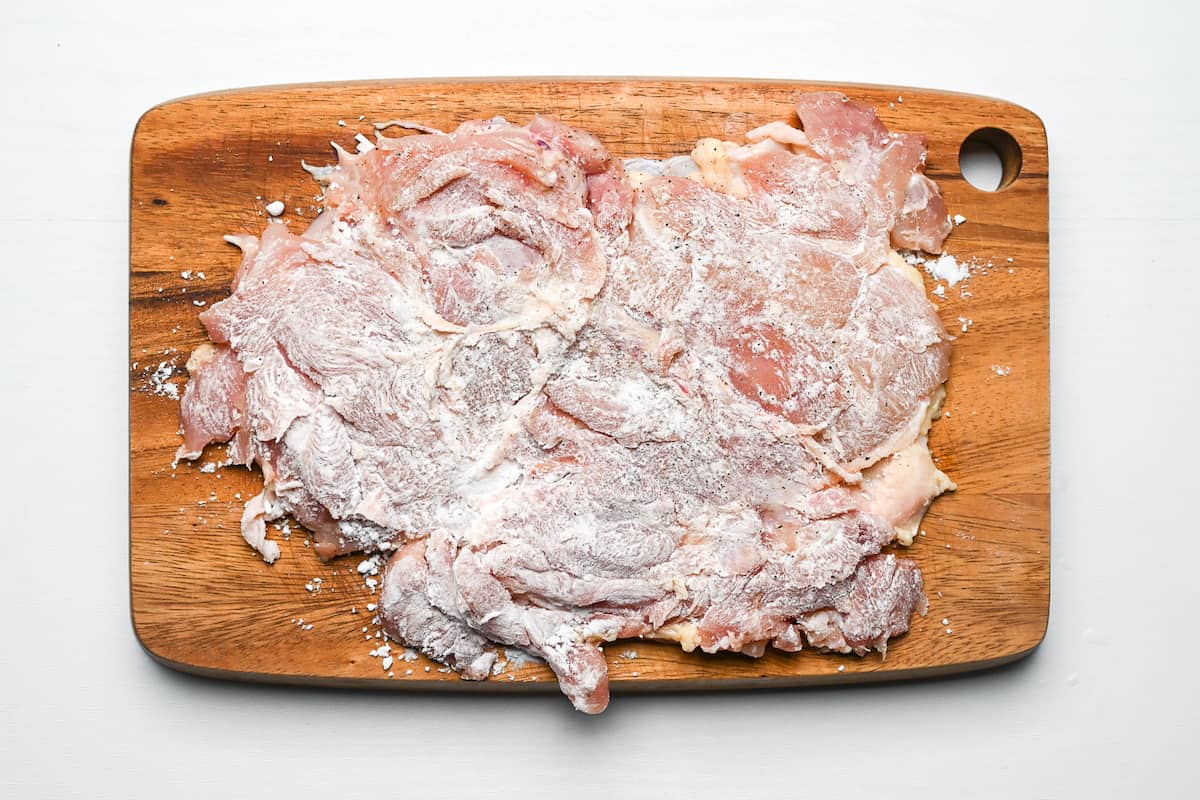
I mentioned this in the ingredients section, but after drying the surface of the chicken with kitchen paper, I coat the underneath with a thin layer of potato starch.
This improves the color and flavor and helps the sauce stick better underneath!
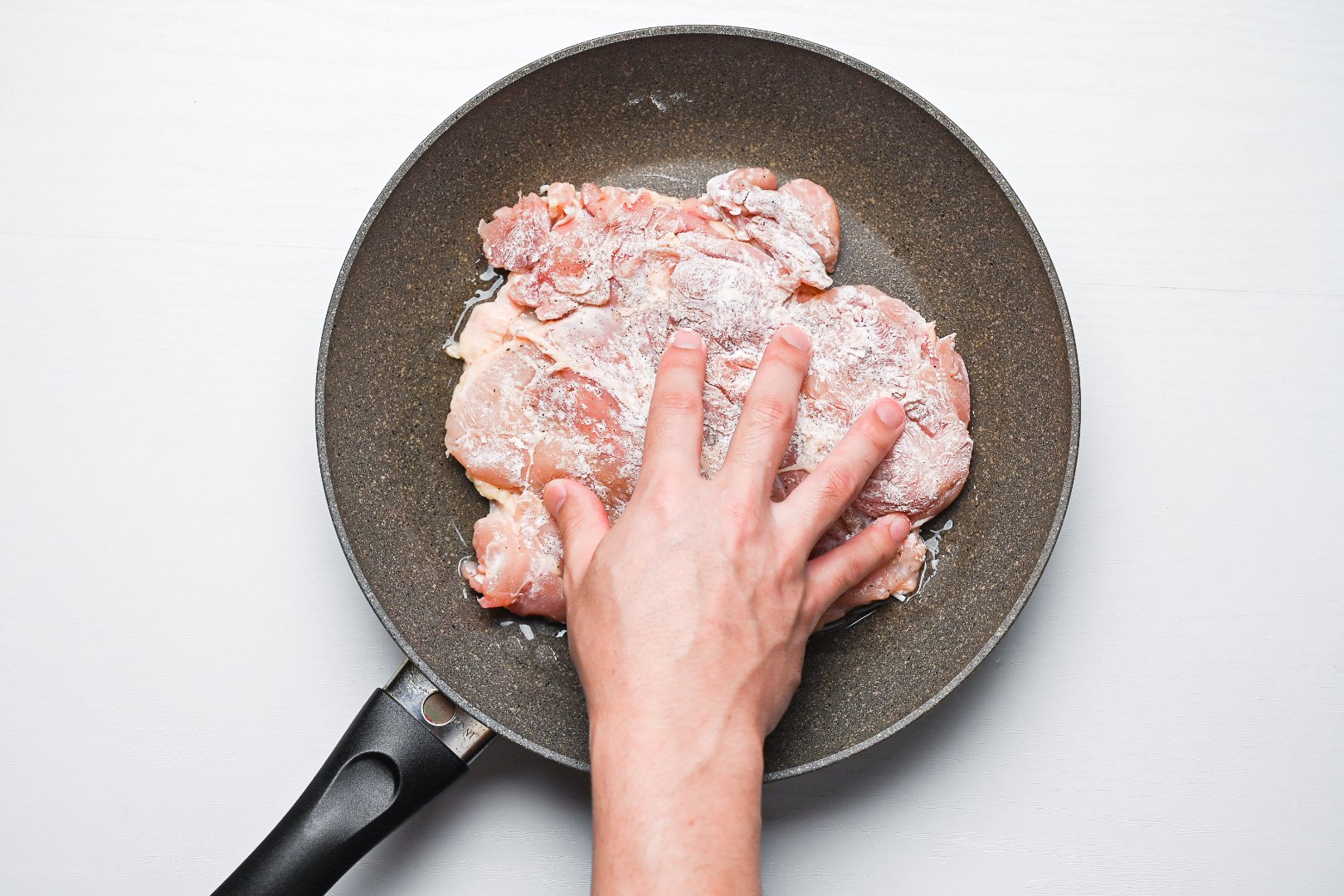
Next, drizzle a small amount of oil into a cold pan and place the chicken in with the skin side facing down. Move it around in a circular motion to ensure the skin is evenly coated with oil, and then heat the pan on medium for 7 minutes. Move the chicken from time to time to prevent burning.
How to Achieve The Perfect Crispy Chicken Skin
Start with a cold pan!
Gradually bringing up the heat allows the fat to render more slowly and makes the skin extra crispy! It creates a fantastic texture, and the teriyaki sauce sticks better, too.
Just note this technique is specifically for skin-on chicken thigh, so if you’re using skin-less or chicken breast, you should preheat your pan as usual.
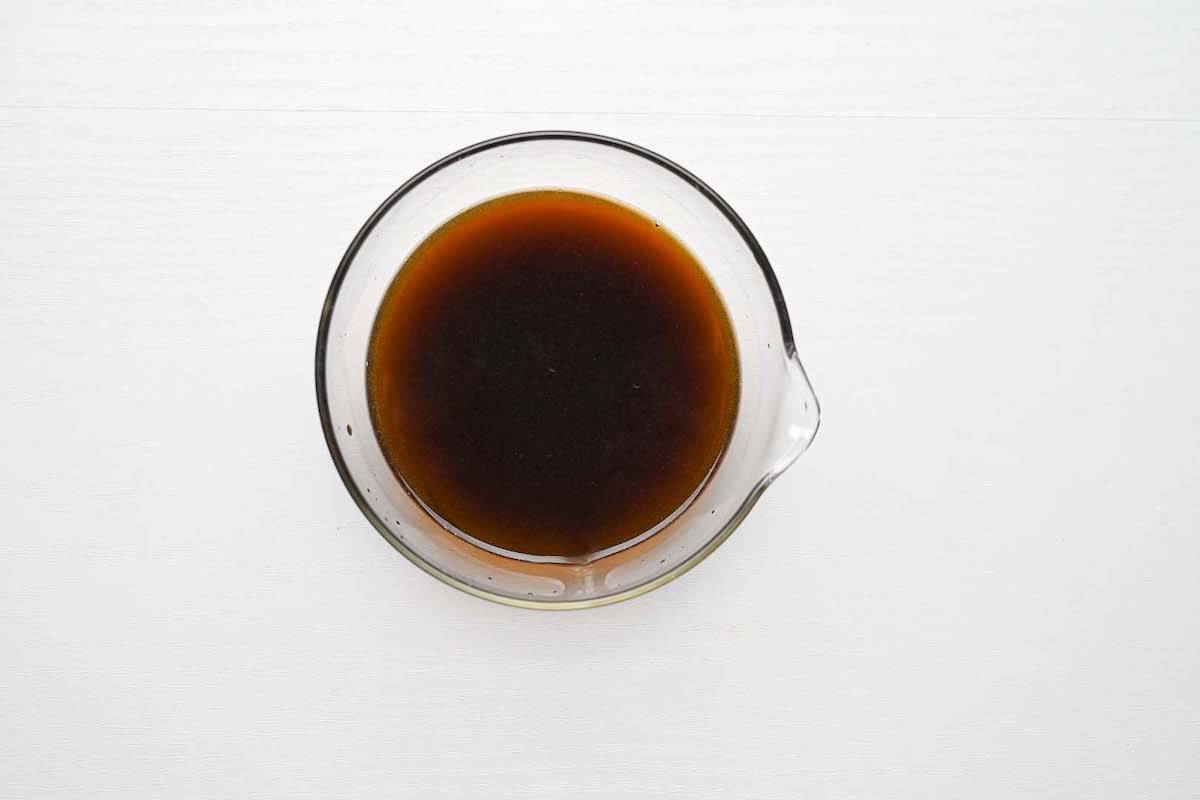
While the chicken is cooking, mix the soy sauce, mirin, sake, brown sugar, dashi, and honey in a small bowl.
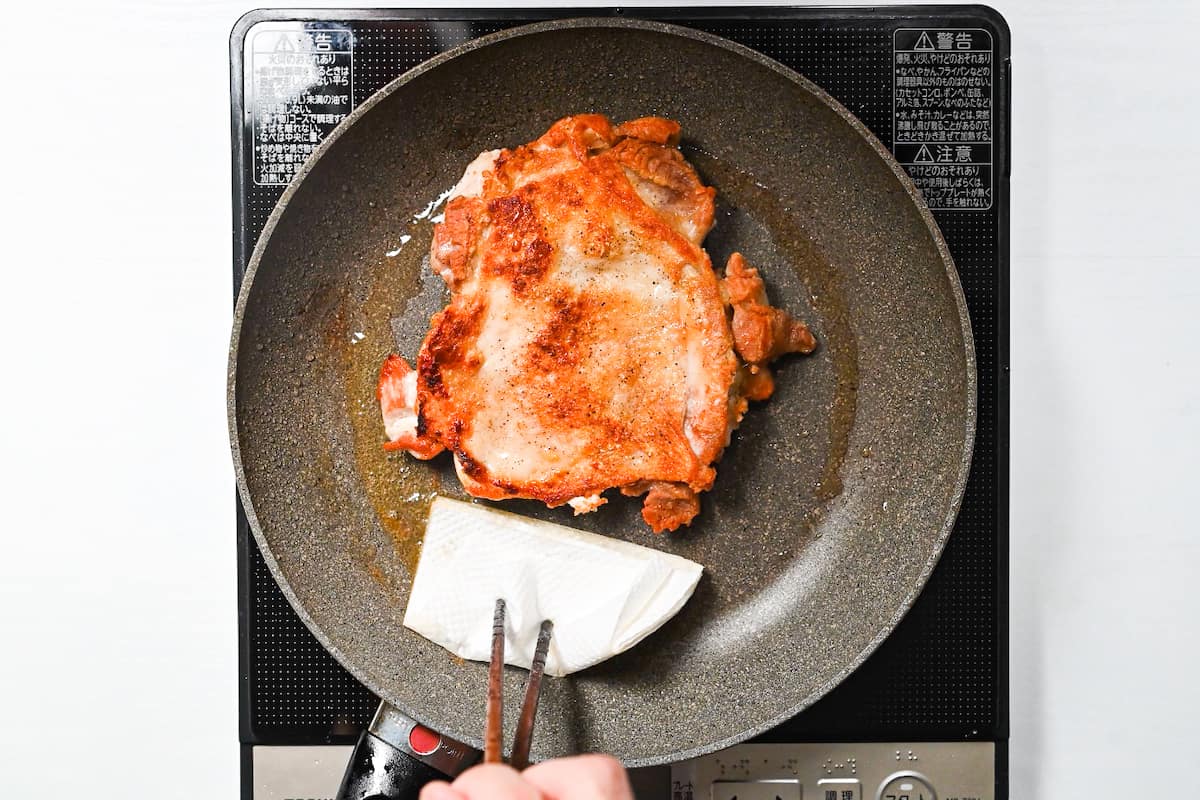
After 7 minutes, flip the chicken over and fry it for 2 minutes. Use a sheet of kitchen paper to wipe up the excess oil in the pan. This is to prevent oil from mixing in with the teriyaki sauce.
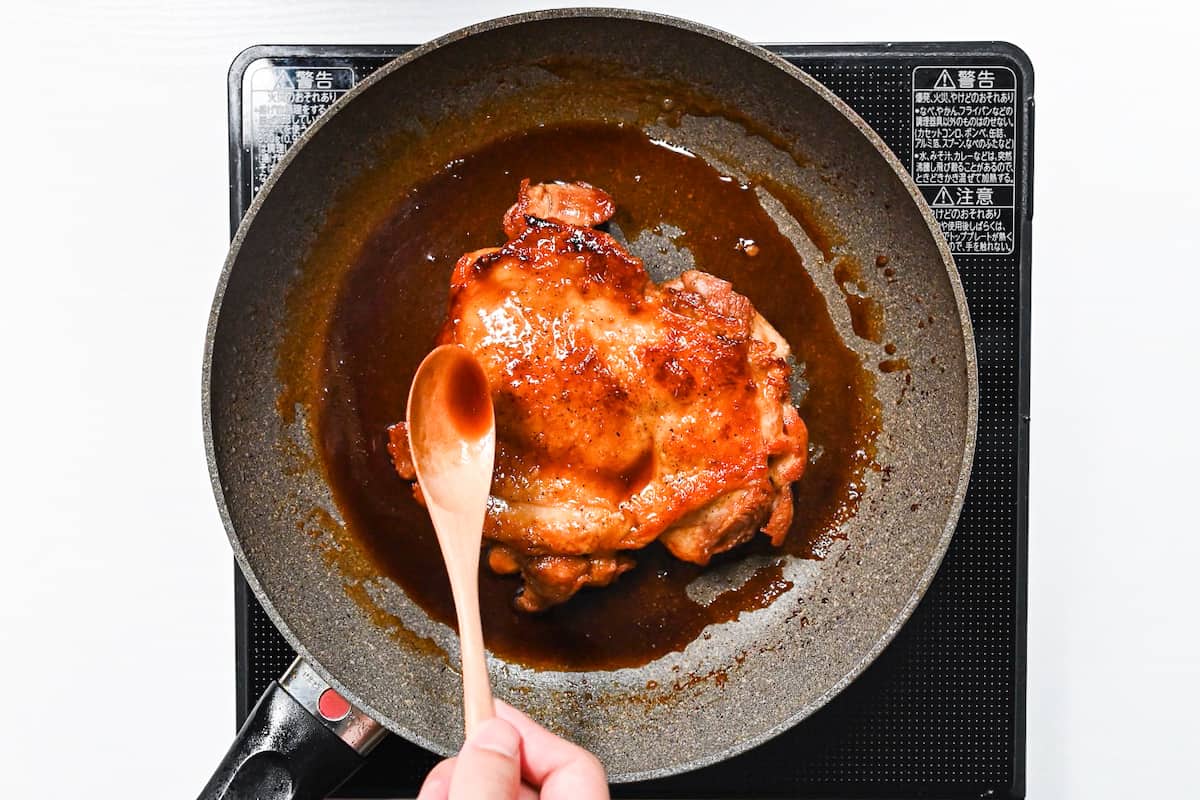
Turn up the heat to medium-high and pour the sauce into the pan. Baste the chicken with the sauce continuously until it has thickened. Occasionally move the chicken around in a circle to ensure the underneath is coated too.
Spooning the sauce over the top prevents the sauce from burning and ensures the top absorbs an equal amount of sauce as the underneath.
Remove the chicken from the pan and allow it to rest for a few minutes, and then cut it into equal slices.
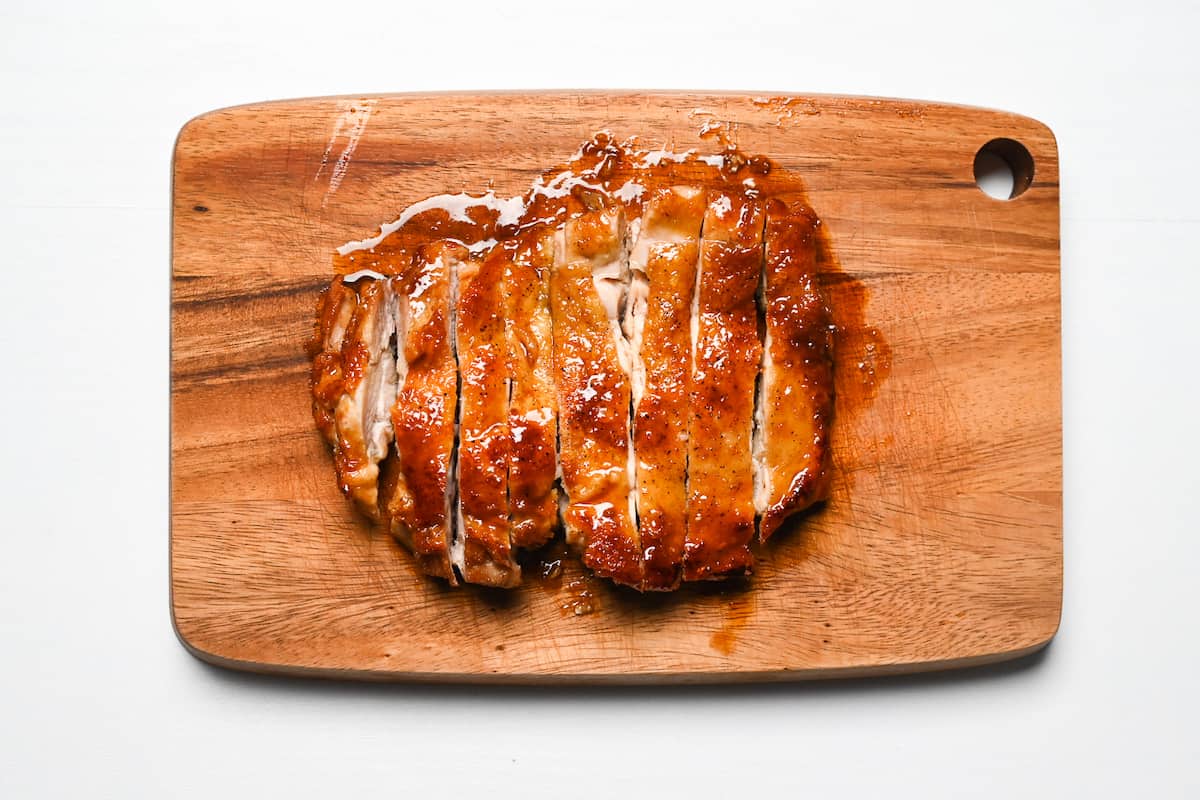
Finally, you can serve it up and enjoy! Teriyaki chicken is versatile and can be used in a whole variety of different dishes!
Jump to Full Recipe MeasurementsHow to Store
Storing teriyaki chicken at room temperature isn’t advisable. While it remains safe for consumption a few hours post-cooking, it’s best enjoyed immediately.
If refrigerated, teriyaki chicken retains its freshness for up to two days. Ensure you reheat it thoroughly, using a microwave or frying pan, until it’s piping hot.
When frozen, its quality is best within the first two weeks, even though it remains safe to eat up to three weeks. However, flavor and texture may degrade over time. Ideally, prepare just the amount you plan to consume.
Storage summary
Room temperature – Not recommended.
Refrigerated – About 2 days.
Frozen – Up to 3 weeks.
FAQ
Here are answers to frequently asked questions I have received across all platforms, including here, YouTube, Instagram, and Pinterest. If you have any questions, feel free to send them to me anytime! It will be a big help for everyone in this community!
This dish is preferably made with chicken thigh, but you can also use chicken breast by adjusting (likely increasing) the cooking time depending on its thickness.
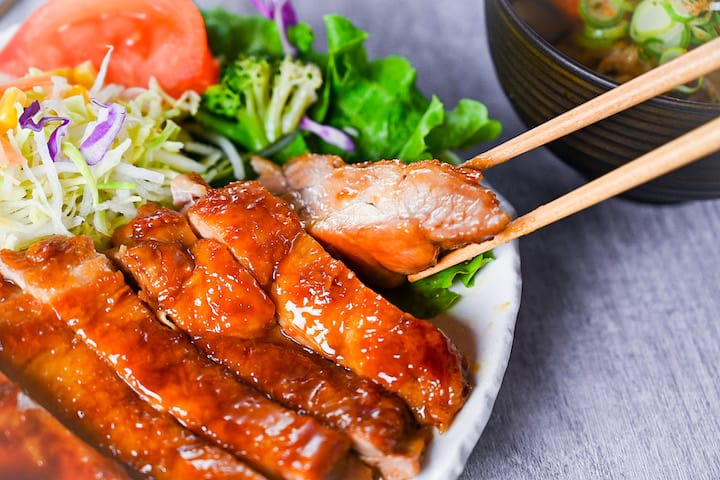
I hope you enjoy this Teriyaki Chicken recipe! If you try it out, I’d really appreciate it if you could spare a moment to let me know what you thought by giving a review and star rating in the comments below. It’s also helpful to share any adjustments you made to the recipe with our other readers. Thank you!
More Delicious Teriyaki Recipes
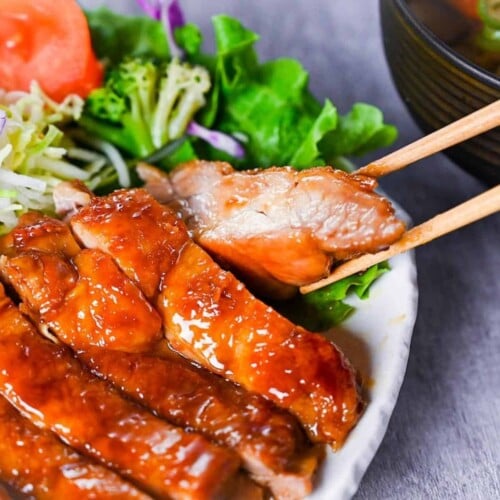
Authentic Crispy Japanese Teriyaki Chicken
Ingredients
- 300 g boneless chicken thigh skin-on
- 1 pinch salt
- ½ tbsp potato starch or corn starch
- ½ tbsp cooking oil
- 2 tbsp soy sauce
- 2 tbsp mirin
- 2 tbsp sake
- 2 tsp brown sugar
- 2 tbsp dashi stock or water
- 1 tsp honey
Instructions
- First, place 300 g boneless chicken thigh on a chopping board with the underneath facing up (skin-side down) and make horizontal incisions on the thickest parts to make small flaps. Pull out the flaps so that the chicken thigh is more or less an even thickness all the way through.

- Flip the chicken over and pierce the skin with a fork all over, then sprinkle with 1 pinch salt on both sides and rub it over.

- Dry the surface with kitchen paper and thinly coat the underneath with ½ tbsp potato starch . Make sure to brush off any excess.

- Add ½ tbsp cooking oil to a cold pan and place the chicken thigh inside with the skin side facing down. Move the chicken around the pan in a circular motion so that the skin and surface of the pan are evenly coated in oil.

- Place the pan on the stove and turn the heat on a medium setting. Fry for 7 minutes, rotating the chicken from time to time to ensure that the skin is evenly browned.

- While the chicken is cooking, take a small bowl and add 2 tbsp soy sauce, 2 tbsp mirin, 2 tbsp sake, 2 tsp brown sugar, 2 tbsp dashi stock and 1 tsp honey. Mix until the sugar and honey are dissolved.

- After 7 minutes have passed, flip the chicken thigh over and fry for 2 minutes on the other side. Use kitchen paper to wipe up excess oil in the pan.

- Once 2 minutes have passed, turn up the heat to medium-high and pour the sauce into the pan. Continuously spoon the sauce over the surface of the chicken until it becomes thick and glossy.

- Remove from the heat and rest for a few minutes before cutting it into strips.

- Enjoy!

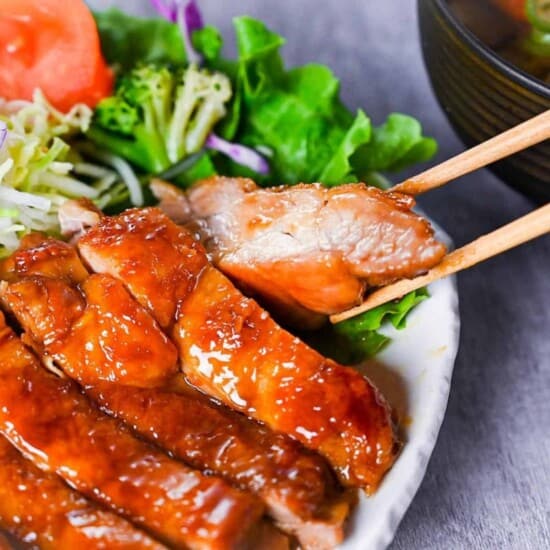



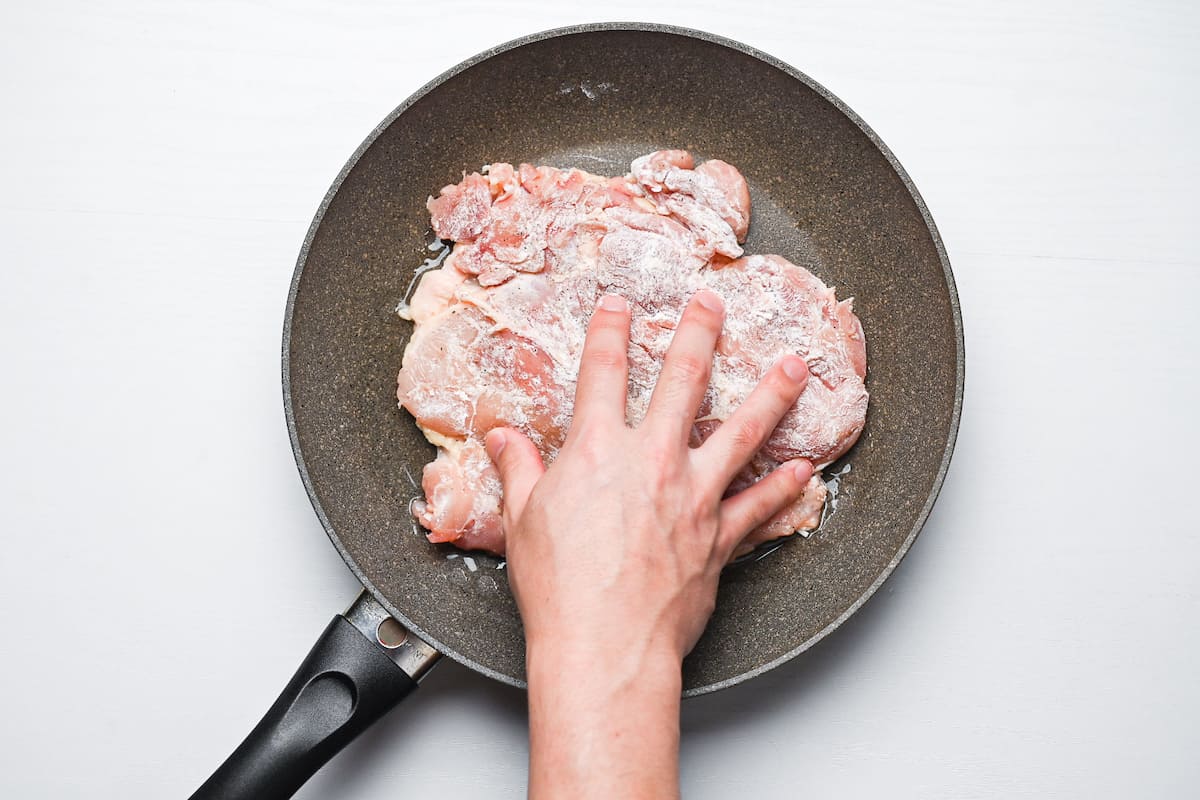
Love the recipe but I don’t have access to mirin, sake, or dashi any suggestions on substitutes?
Thank you! Dashi is just a bonus ingredient that can be replaced with water. To replace sake and mirin, most people recommend dry sherry or rice wine vinegar with extra sugar (maybe an extra tsp for this recipe?) but I haven’t tried it myself so I can’t guarantee the taste. Good luck!
for the mirin and the sake I have used sherry wine (sake) and muscat (mirin) un many recipes with good results.. for the dashi, if you can’t even order it online, maybe u can use dried shitake mushrooms water, it’ll give u the unami taste….
This recipe taught me to cook chicken in a way I had never thought to do before. I have cooked chicken this way using a long list of variations in sauces/marinades. Our favorites include this teriyaki version, as well as BBQ (Korean BBQ) and my own take on a Lemon (and orange!) marinade. Anything you can really think of cooks up perfectly and is really good over rice!
Hi Amy!
I’m so happy to hear you’ve enjoyed this recipe in so many ways, Korean BBQ and lemon chicken sound delicious. I should definitely try that, thank you for sharing!
All the best,
Yuto
Finally, the perfect teriyaki recipe! It’s AUTHENTIC, simple teriyaki without any extraneous ingredients and with the perfect ratio. It’s absolutely delicious! Thank you so much, we’ve made this many times now and love it.
Hi Laura,
Thank you very much for your compliment and making this recipe many times! 🙂
Even though your recipe for the teriyaki sauce has less sugar than most of the traditional recipes I’ve come across, I still find it too sweet. My only conclusion is that the Japanese palate gravitates towards sweet dishes. Will tweak the recipe to my taste. Thanks for sharing!
Hi Diane,
Thank you for the comment!
I think you’re right! When I returned to Japan from England after being away for 5 years, even I found some dishes a bit intense, which I had never thought about before.
I’ve been back in Japan for about 8 years now, but I will keep that in mind and try to adjust the dishes that I feel might be too intense for people outside of Japan, while still maintaining authenticity!
Yuto
Thank you for this recipe! I made it after school for my parents and they loved it! The sauce is hands down the best I’ve ever had.
Hi Lev,
Thank you for trying this recipe and sharing your experience! I’m very happy to hear you and your parents enjoyed it! 🙂
Yuto